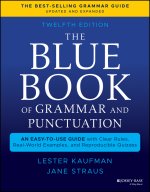
Code: 08243550
Strategic and Operational Decision-Making
by Corey A Givens
The United States and Japan had a very contentious relationship between 1939 and 1941. During this time, Japan's strategic objectives focused on the desire for a policy of national self-sufficiency and of non-reliance on Western i ... more
- Language:
 English
English - Binding: Paperback
- Number of pages: 56
Publisher: Biblioscholar, 2012
- More about this

You might also like
-

Ztracený symbol
18.17 € -

History of Nova Scotia or Acadie.
33.73 € -

Every Child Can Learn
17.47 € -

Brief Notes on Existence
17.67 € -

Der Zauber der Intimität
8.58 € -9 % -

Word Militant, paperback edition
29.49 €
Give this book as a present today
- Order book and choose Gift Order.
- We will send you book gift voucher at once. You can give it out to anyone.
- Book will be send to donee, nothing more to care about.
More about Strategic and Operational Decision-Making
You get 150 loyalty points
 Book synopsis
Book synopsis
The United States and Japan had a very contentious relationship between 1939 and 1941. During this time, Japan's strategic objectives focused on the desire for a policy of national self-sufficiency and of non-reliance on Western imports or economic aid. Its major operational objective was the Dutch East Indies, where Japan imported its oil, rubber, and a number of other goods. Japan fully pursued its objectives as the armed forces provided the foundation for plans to identify, protect, modernize, and expand its national interests. Conversely, the weakness of the United States' military restricted its strategic and operational objectives. One of the strategic objectives for the United States was to uphold the principles of the Open Door in East Asia. However, the United States was unable to embark upon punitive measures to protest Japan's seizure and economic assimilation of Manchuria. America's key operational objective was maintenance of the Philippines, a place from which the United States could project its power. For state actors, keeping the elements of national power, or Diplomacy, Information, Military, and Economy (DIME) in alignment is significant for national stability. An analysis of America's DIME construct reveals how the weakness of the United States' military forced it to rely on the Diplomatic and Economic elements of national power, and this negatively affected the way the United States conducted its strategic and operational decision-making with imperial Japan from 1939-1941. Diplomatically, American policy intended to uphold the Open Door Policy in the Far East; however, its foreign policy was weak because it did not have the necessary military might to back its demands. Therefore, the United States resorted to economic pressure. It implemented a policy of escalating deterrence in an effort to stop Japanese expansion. The economic pressure became too much when the United States deprived Japan of oil, which was a major commodity that the Japanese c
 Book details
Book details
Book category Books in English Society & social sciences Education
59.99 €
- Full title: Strategic and Operational Decision-Making
- Subtitle: Does Military Weakness Affect Decisions Made?
- Author: Corey A Givens
- Language:
 English
English - Binding: Paperback
- Number of pages: 56
- EAN: 9781288322473
- ISBN: 9781288322473
- ID: 08243550
- Publisher: Biblioscholar
- Weight: 118 g
- Dimensions: 246 × 189 × 3 mm
- Date of publishing: 21. November 2012
Trending among others
-

Cambridge IGCSE (R) & O Level Complete Physics: Student Book Fourth Edition
42.11 € -

Cambridge IGCSE (R) & O Level Complete Biology: Student Book Fourth Edition
39.18 € -

Oxford IB Diploma Programme: IB Economics Course Book
62.22 € -

Cambridge IGCSE (R) & O Level Complete Biology: Print and Enhanced Online Student Book Pack Fourth Edition
61.31 € -

Teach Reading With Orton-gillingham
18.88 € -10 % -

Oxford International Primary Science Second Edition: Workbook 4
15.04 € -

Business Partner B1+ Workbook
16.86 € -3 % -

Oxford International Primary Science Second Edition: Student Book 1
26.86 € -

Oxford International Primary Maths Second Edition: Practice Book 2
12.21 € -

Edexcel International GCSE Chemistry Student Book Second Edition
35.35 € -4 % -

Oxford International Primary Maths Second Edition: Practice Book 1
12.21 € -

240 Vocabulary Words Kids Need to Know: Grade 3
11.81 € -17 % -

Oxford International Primary Maths Second Edition: Practice Book 3
13.63 € -

Growth Mindset Classroom-ready Resource Book
16.25 € -28 % -

Cambridge IGCSE (R) & O Level Complete Chemistry: Student Book Fourth Edition
46.96 € -

geog.2 Workbook
12.52 € -

Oxford IB Diploma Programme: IB Theory of Knowledge Course Book
57.97 € -

KS3 Maths 10-Minute Weekly Workouts - Year 7
8.07 € -8 % -

Blue Book of Grammar and Punctuation: An Easy- to-Use Guide with Clear Rules, Real-World Examples , and Reproducible Quizzes, Twelfth Edition
15.14 € -28 % -

Powerful Teaching: Unleash the Science of Learning
26.15 € -26 % -

ESL/ELL Teacher's Survival Guide: Ready-to-Use Strategies, Tools, and Activities for Teaching En glish Language Learners of All Levels, 2nd Edition
29.79 € -21 % -

Oxford IB Study Guides: Economics for the IB Diploma
47.67 € -

Embodied Teen
21.81 € -15 % -

(ISC) SSCP SG & SSCP Practice Test Kit, 3e
65.05 € -28 % -

AQA A Level Biology Revision Guide
25.55 € -6 % -

UKCAT For Dummies
23.22 € -28 % -

Donny's Unauthorized Technical Guide to Harley Davidson 1936 to Present
46.36 € -19 % -

OET Speaking for Nurses Book 2
11.61 € -2 % -

Cambridge IGCSE (R) & O Level Complete Physics: Print and Enhanced Online Student Book Pack Fourth Edition
57.97 € -

Walk Your Talk; Tools and Theories To Share Nonviolent Communication
29.39 € -

OET Speaking For Nurses Book 1
12.92 € -

Social Skills Activities for Secondary Students wi th Special Needs, Third Edition
26.76 € -20 % -

geog.1 5th edition Workbook Answer Book
56.36 € -

New KS2 English Year 5 Foundation Grammar, Punctuation & Spelling Targeted Question Book w/Answers
8.98 € -5 % -

Making Escape Rooms for Educational Purposes
18.98 € -

New KS2 English Year 4 Foundation Grammar, Punctuation & Spelling Targeted Question Book w/Answers
8.98 € -5 % -

Cambridge IGCSE (R) & O Level Complete Chemistry: Print and Enhanced Online Student Book Pack Fourth Edition
63.13 € -

Oxford International Primary Maths Second Edition: Practice Book 5
16.56 € -

Oxford IB Diploma Programme: Oxford IB Diploma Programme: IB Mathematics: applications and interpretation Standard Level Enhanced Online Course Book
95.35 € -

Education in the New Age
12.92 € -

OET Preparation
9.69 € -

Business Partner B1 Workbook
17.67 € -8 % -

Speed and Accuracy: Multiplication
8.58 € -

KS3 Maths 10-Minute Weekly Workouts - Year 8
8.07 € -8 % -

Business Partner B2 Workbook
16.86 € -3 % -

Speed and Accuracy: Division
8.58 € -

1000 TRIOS or gapped sentences for Cambridge Advanced and Proficiency Exams
24.23 € -

Pearson Edexcel AS and A level Mathematics Statistics & Mechanics Year 1/AS Textbook + e-book
17.77 € -

Pearson Edexcel International GCSE (9-1) English Language B Student Book
50.50 €
Collection points Bratislava a 2642 dalších
Copyright ©2008-24 najlacnejsie-knihy.sk All rights reservedPrivacyCookies



 15549 collection points
15549 collection points Delivery 2.99 €
Delivery 2.99 € 02/210 210 99 (8-15.30h)
02/210 210 99 (8-15.30h)